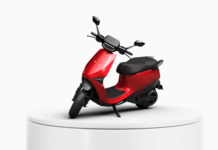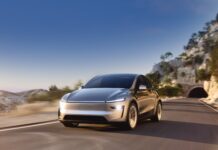Honda CEO, Toshihiro Mibe, is betting on new battery technology to develop affordable electric versions of its smaller cars. However, before that happens, the Japanese automaker plans to sell larger and more expensive electric vehicles (EVs) to help absorb production costs. Honda is seeking to catch up with rivals who are leading the charge in the electric vehicle race, as the industry experiences a faster transition away from traditional cars and trucks. Here are the details…
Honda’s Plan to Develop Smaller EVs with Its Own Platform Starting in 2026
One of the biggest challenges faced by automakers in the EV industry is the high cost of batteries, which can make EVs 40% more expensive to produce than gas-powered cars. Honda is hoping that a different technology – solid-state batteries – will eventually help bring down these costs and make EVs more accessible.

Lithium-ion batteries, the current industry standard, use a liquid electrolyte to conduct electricity between the cathode and anode. In contrast, solid-state batteries replace that liquid with more stable materials like ceramics, reducing the size and cost of the battery pack. Honda has joined the race to develop solid-state batteries, although it arguably lags behind better-resourced peers like Toyota and Nissan. Other carmakers like General Motors and Ford also have solid-state ambitions.
However, Mibe is aware that getting solid-state technology ready for mass consumption could take several years, and figuring out when to ramp up production will be difficult. It will also take a significant investment to produce those batteries, so Honda needs to ensure that the market is prepared before pushing ahead.
The company is developing its own solid-state battery program, which the company has discussed with GM, and is working on another with Korean partner LG Energy Solution, a unit of LG Chem Ltd. Meanwhile, the company’s first EVs will be larger, more expensive SUVs, built using GM’s Ultium EV platform, with the Honda Prologue and Acura ZDX set to go on sale in 2024.
According to Sam Abuelsamid, an analyst at Guidehouse Insights, Honda needs to get more EVs to market to remain competitive in the US and Europe, as the market is rapidly getting to the point where you need a presence in multiple segments to stay competitive. Mibe is also aware of the challenges posed by the US market, where the charging network isn’t as robust as it needs to be for customers.
He believes that charging infrastructure is a country-level concern that Honda needs to think about as it moves toward achieving its goal of achieving 40% EV sales by 2030. Despite the challenges, Honda is committed to developing EVs and has teamed up with Sony to develop them. The company has also pledged to sell only electrified vehicles by 2040.
RELATED:
- Realme GT 3 vs Xiaomi 13: Specs Comparison
- Turkey Imposes Additional 40% Tariff on EV Imports From China
- BYD U9 Supercar Surfaces in Spy Shots: Sleek Design & Cutting-Edge Tech
- Huawei’s Plans for £1 Billion Cambridge Research Campus Hit Dead End
- Xiaomi’s Mysterious Sedan Spotted Thanks to Spy Camera
(via)








Comments